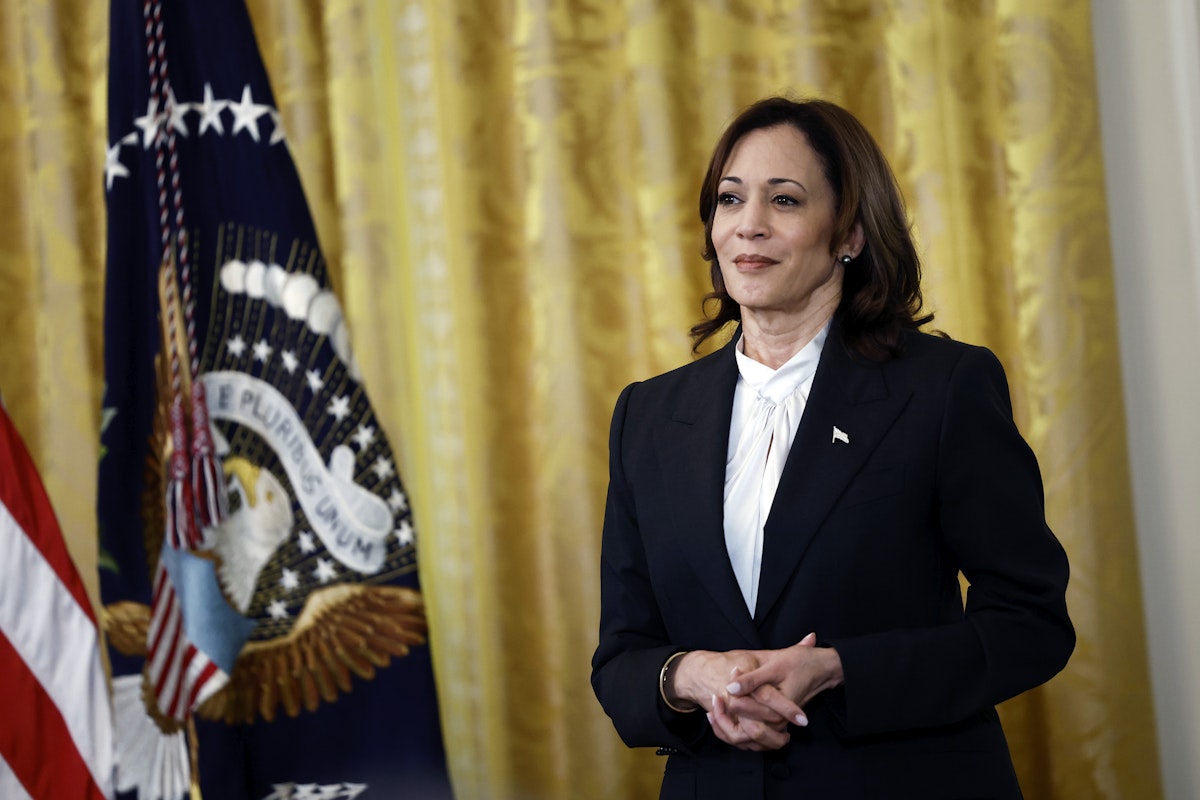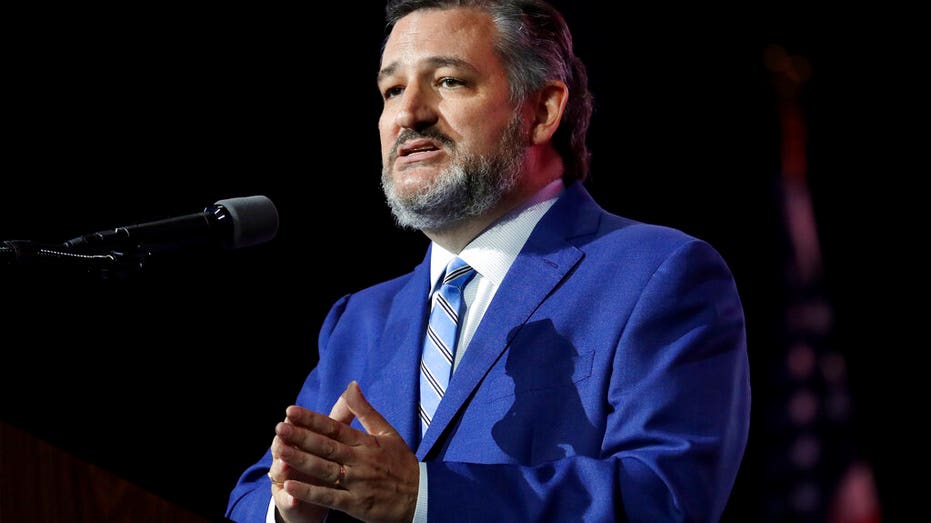Where Are Harris’s Policies? Trapped in the Supreme Court
With the party vibes at the Democratic National Convention fading, and attention turning to the ragged ten-week sprint to November, the punditocracy seems ready to declare an end to Kamala Harris’s honeymoon. Where, everyone wants to know, are her policy positions? The notion that she has none has been overstated, but this is indeed the moment where a campaign, after all the convention’s frippery, is expected to put some meat on the bone. And given that Harris has lately retreated from bold positions she once took on a range of issues, she will be “expected to … explain the differences between her 2019 primary campaign agenda and her more limited ambitions as the Democratic nominee in 2024,” as Brian Beutler notes in his Off Message newsletter.I’m curious about this as well—and since I labor at a journal of ideas, I’d certainly prefer the next phase of the conversation to veer in the direction of policy. But if you want to know the biggest difference between 2019 and now, I would urge you to consider the dark shadow that hangs over everything: the Supreme Court’s conservative majority’s decision in Loper Bright Enterprises v. Raimondo. That ruling, which overturned a doctrine called “Chevron deference,” puts the future of any policy that Harris favors in grave doubt. If you want the Harris campaign to get more detailed on policy, I’m sorry to say that any conversation starts and ends with how they plan to confront a Supreme Court that has torched the separation of powers in the mad game of Calvinball they kicked off during the Trump era. The gutting of Chevron deference is not something that the smooth-brained masses of the political media adequately understood when it came down. Chevron deference is essentially the doctrine that allows government agencies to respond nimbly to their congressional mandates; hitherto, the judiciary stayed out of the way, allowing executive branch personnel to use their expertise to interpret ambiguous regulations. Imagine, for example, the technological advancements that have occurred since landmark environmental legislation was passed decades ago. The EPA, given free rein to adapt to this changing landscape, can move more fleetly to remediate pollution thanks to Chevron. The Roberts court, instead, imagines a world where they have to return to Congress each time there is an emergency, to get specific guidance.The best way of describing what the conservative majority did is to say it gave six unelected right-wing politicians who all enjoy a lifetime appointment a line-item veto over anything a Democratic Congress—and by extension Harris—wants to do, unless they can muster the votes to confront each problem they want to solve with an inhuman amount of hyper-specificity. As Vox’s Ian Millhiser has explained, if the executive branch “can’t regulate without getting permission from a Republican judiciary … then conservatives no longer need to worry about Democratic presidents doing much of anything that doesn’t meet the GOP’s approval.” Judicial malefactors have already cited Loper Bright to challenge President Joe Biden’s policies and pilfer money from the pockets of ordinary people. The way this ruling potentially hamstrings the ability of the federal government to protect ordinary people from a myriad of harms means this is a Supreme Court decision that will come with a running tally of costs to taxpayers—and, most likely, a body count. The Supreme Court really is the most critical policy issue in this election. The Trump-installed majority is central to what the right plans for a second Trump term. Beyond the fact that the Roberts court’s ruling in Trump v. United States imbues the chief executive with monarchic levels of unaccountability—a dangerous privilege for, frankly, any president to possess—Project 2025, which is best understood as a massive rollback of individual rights, is something that Republicans simply could never contemplate without their super-legislature in black robes. Here, vaporizing Chevron has an asymmetric impact on the ambitions of the two parties. The GOP, having retreated from any part of the policy realm besides Project 2025’s infernal schemes, the furnishing of tax cuts to plutocrats, and deregulating everything under the sun (also a form of wealth transfer to plutocrats), need not worry about Chevron being in effect anymore.But what makes Chevron crucial to this campaign is that the sledding for Democrats remains rough even if they prevail in November. Indeed, even if they blow the GOP out of the water electorally, the end of Chevron deference is a fail-safe against Democratic policy, constantly running in the background as long as five of the six conservatives on the Roberts court agree. In this way, Harris and her fellow Democrats are locked out of liberal governance. Since liberal governance will form the cornerstone of anything Harris and Democrats want to do during her time in office, a confrontation with a Supreme Court that’s holding the pol

With the party vibes at the Democratic National Convention fading, and attention turning to the ragged ten-week sprint to November, the punditocracy seems ready to declare an end to Kamala Harris’s honeymoon. Where, everyone wants to know, are her policy positions? The notion that she has none has been overstated, but this is indeed the moment where a campaign, after all the convention’s frippery, is expected to put some meat on the bone. And given that Harris has lately retreated from bold positions she once took on a range of issues, she will be “expected to … explain the differences between her 2019 primary campaign agenda and her more limited ambitions as the Democratic nominee in 2024,” as Brian Beutler notes in his Off Message newsletter.
I’m curious about this as well—and since I labor at a journal of ideas, I’d certainly prefer the next phase of the conversation to veer in the direction of policy. But if you want to know the biggest difference between 2019 and now, I would urge you to consider the dark shadow that hangs over everything: the Supreme Court’s conservative majority’s decision in Loper Bright Enterprises v. Raimondo.
That ruling, which overturned a doctrine called “Chevron deference,” puts the future of any policy that Harris favors in grave doubt. If you want the Harris campaign to get more detailed on policy, I’m sorry to say that any conversation starts and ends with how they plan to confront a Supreme Court that has torched the separation of powers in the mad game of Calvinball they kicked off during the Trump era.
The gutting of Chevron deference is not something that the smooth-brained masses of the political media adequately understood when it came down. Chevron deference is essentially the doctrine that allows government agencies to respond nimbly to their congressional mandates; hitherto, the judiciary stayed out of the way, allowing executive branch personnel to use their expertise to interpret ambiguous regulations. Imagine, for example, the technological advancements that have occurred since landmark environmental legislation was passed decades ago. The EPA, given free rein to adapt to this changing landscape, can move more fleetly to remediate pollution thanks to Chevron. The Roberts court, instead, imagines a world where they have to return to Congress each time there is an emergency, to get specific guidance.
The best way of describing what the conservative majority did is to say it gave six unelected right-wing politicians who all enjoy a lifetime appointment a line-item veto over anything a Democratic Congress—and by extension Harris—wants to do, unless they can muster the votes to confront each problem they want to solve with an inhuman amount of hyper-specificity. As Vox’s Ian Millhiser has explained, if the executive branch “can’t regulate without getting permission from a Republican judiciary … then conservatives no longer need to worry about Democratic presidents doing much of anything that doesn’t meet the GOP’s approval.”
Judicial malefactors have already cited Loper Bright to challenge President Joe Biden’s policies and pilfer money from the pockets of ordinary people. The way this ruling potentially hamstrings the ability of the federal government to protect ordinary people from a myriad of harms means this is a Supreme Court decision that will come with a running tally of costs to taxpayers—and, most likely, a body count.
The Supreme Court really is the most critical policy issue in this election. The Trump-installed majority is central to what the right plans for a second Trump term. Beyond the fact that the Roberts court’s ruling in Trump v. United States imbues the chief executive with monarchic levels of unaccountability—a dangerous privilege for, frankly, any president to possess—Project 2025, which is best understood as a massive rollback of individual rights, is something that Republicans simply could never contemplate without their super-legislature in black robes.
Here, vaporizing Chevron has an asymmetric impact on the ambitions of the two parties. The GOP, having retreated from any part of the policy realm besides Project 2025’s infernal schemes, the furnishing of tax cuts to plutocrats, and deregulating everything under the sun (also a form of wealth transfer to plutocrats), need not worry about Chevron being in effect anymore.
But what makes Chevron crucial to this campaign is that the sledding for Democrats remains rough even if they prevail in November. Indeed, even if they blow the GOP out of the water electorally, the end of Chevron deference is a fail-safe against Democratic policy, constantly running in the background as long as five of the six conservatives on the Roberts court agree. In this way, Harris and her fellow Democrats are locked out of liberal governance. Since liberal governance will form the cornerstone of anything Harris and Democrats want to do during her time in office, a confrontation with a Supreme Court that’s holding the policymaking apparatus hostage is not a fight they can duck.
All Democrats need to join in this fight, and constantly raise the salience of the Supreme Court and its attendant corruption. It would be a good idea for any policy discussion to note that the Roberts court is the primary antagonist to making things better, easier, safer, and fairer for ordinary Americans; they are despoilers of the land and pilferers of our wealth. Harris should continually remind voters that turning things around will require a Democratic president to be on hand to appoint any replacements that may be needed, and prevent the oldest conservative justices from escaping into retirement, which would allow Trump to replace them with young members of the right’s lunatic lower-court farm system.
Is it time to revisit court-packing? I think the institutionalist case against it completely collapsed by the end of the court’s last term, but I doubt Harris has the stomach to revive the idea over the next several weeks. Nevertheless, the Supreme Court will remain the rock in the road that Democrats must find a way around if they want to improve our lives. Anything you might want an ascendant Democratic administration to do faces the judicial veto of right-wingers who can’t be voted out of office. It’s true that Harris is probably not going to deliver, or even champion, the most ambitious policies that progressives favor. But whether you’re a progressive fan of Medicare for All, or a centrist dedicated to means-tested, watered-down bullshit, you’re all in the same boat, so grab an oar.



